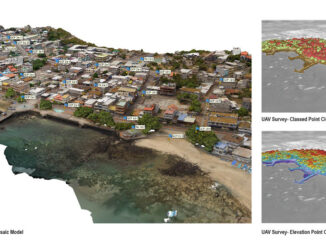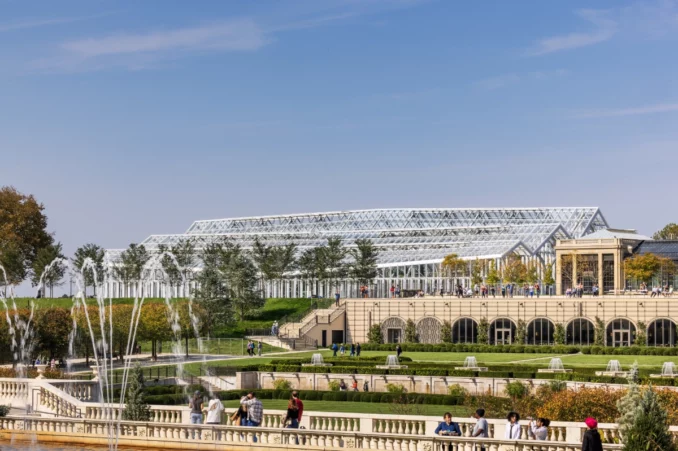
Longwood Gardens will unveil Longwood Reimagined: A New Garden Experience to the public on November 22, 2024, celebrating the final stage of the most ambitious revitalization in the Garden’s 100-year history. Led by the acclaimed architecture practice WEISS/MANFREDI in collaboration with eminent landscape architecture firm Reed Hilderbrand. Longwood Reimagined expands the public spaces of the renowned central grounds adding new buildings and new landscapes across 17 acres.
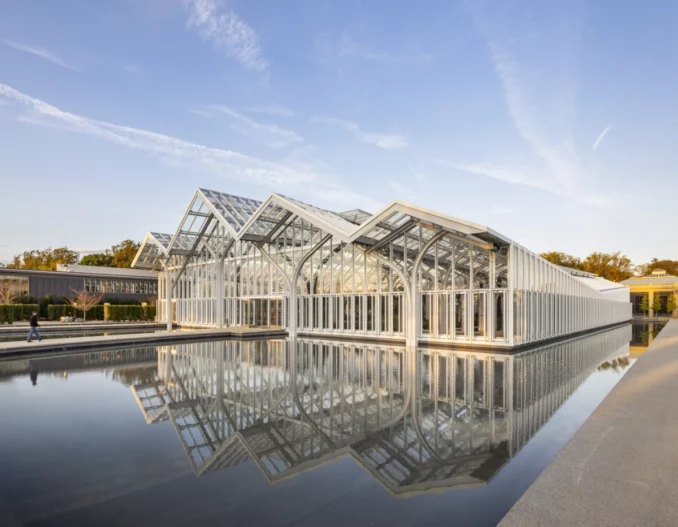
Longwood Gardens, renowned for its harmonious blend of horticulture and architectural artistry, has unveiled its most ambitious project to date: a transformative 32,000-square-foot glasshouse as the centerpiece of its “Longwood Reimagined” initiative. Designed by acclaimed architecture firm WEISS/MANFREDI, the new structure redefines the gardens’ western grounds with a bold vision for the 21st century.
A glasshouse for the 21st Century
The interior of the glasshouse features an immersive Mediterranean Garden conceived by landscape architects Reed Hilderbrand. Visitors will encounter a captivating landscape of planted islands, tranquil pools, canals, and low fountains, evoking the natural and cultivated beauty of Mediterranean environments. The West Conservatory’s design, with its asymmetrical crystalline peaks, appears to float on a reflective pool, offering an ethereal visual experience.
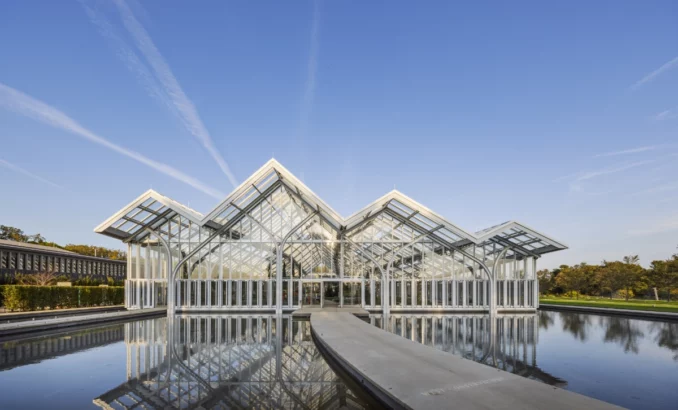
“We’re inspired by the sense of discovery and innovation that are defining signatures of Longwood Gardens. We envisioned this transformation of 17 acres as a cinematic journey, a sequence of experiences that range from intimate to grand, reshaping the western grounds into a cultural campus that brings Longwood into a new century. With the West Conservatory as the centerpiece of this newly conceived crystalline ridge, the pleated roof, branching columns, and tapered perspectives extend the marriage of architecture and horticulture that is intrinsic to Longwood’s identity.” said Marion Weiss and Michael Manfredi, principals of WEISS/MANFREDI.

Sustainability at the Forefront
The West Conservatory is not just an architectural marvel but also a beacon of sustainability. A network of 128 geothermal wells, each reaching a depth of 315 feet, forms the backbone of its heating and cooling system. These wells are linked to a ground-source, multi-stage heat exchanger, which efficiently regulates the temperature for the conservatory, administrative facilities, and reception areas.
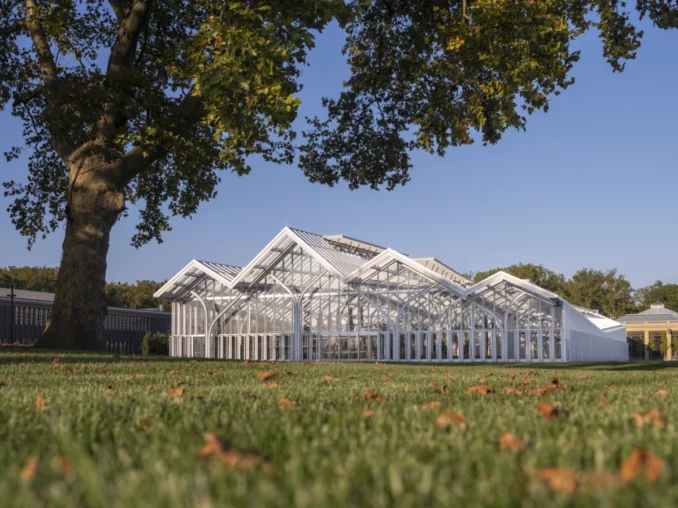
Additionally, the glasshouse employs a series of 300-foot-long earth ducts buried beneath the gardens’ southern slope. These ducts temper fresh air year-round, warming it in winter and cooling it in summer, significantly reducing the building’s reliance on mechanical heating and cooling systems. This innovative approach enhances natural ventilation, minimizing energy consumption while ensuring visitor comfort.
The project underscores Longwood Gardens’ commitment to sustainability, beauty, and innovation, ensuring its place as a global leader in horticultural excellence for generations to come.
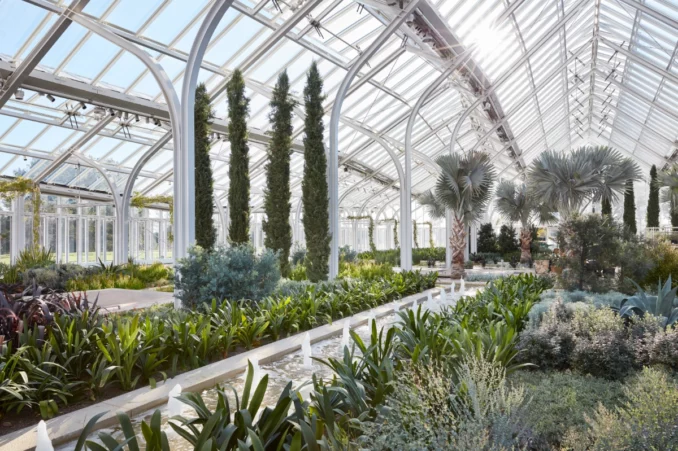
Mediterrean Garden takes center stage
Inspired by the gardens and landscapes of the six global Mediterranean ecozones (the Mediterranean Basin, South Africa’s Cape Region, coastal California, Central Chile, and Southwestern and South Australia), the West Conservatory garden incorporates three planted islands set on an expansive sheet of water.
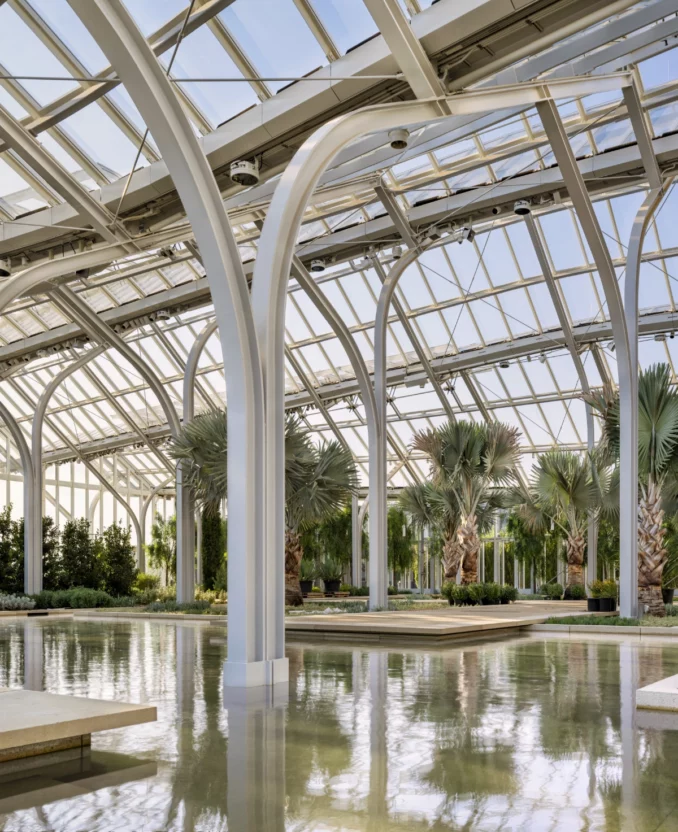
Cast stone paths and bridges hover above the plane of the garden and lead to brick terraces for gathering and pausing. Together these features draw guests through a rich juxtaposition of plants, stone, quiet water, and animated fountains that evoke characteristics of the Mediterranean landscape while alternating experiences of intimacy and openness.
Sixty species of plants compose the tapestry of the permanent garden. Drifts of low shrubs and perennials carpet the islands, many with tufty, billowy forms and small leaves that reflect the plants’ response to the scarcity of water, infertile soils, and windswept conditions of this ecozone. The composition includes a range of iconic plants: Agaves (Agave), Aloes (Aloe ‘Johnson’s Hybrid’), Blueblossom (Ceanothus griseus var. horizontalis ‘Yankee Point’), and the tiny pink flowers of Deltoid-leaved Dewplant (Oscularia deltoides) that hug the ground. A slightly taller shrub layer expands the garden’s texture and includes the evergreen pincushion shrub (Leucospermum ‘Brandi Dela Cruz’); the dense Egg-and-Bacon plant (Eutaxia myrtifolia), which is known for its two-toned yellow and red-brown flowers; and the aromatic Prostanthera rotundifolia known for its fragrant purple flowers.
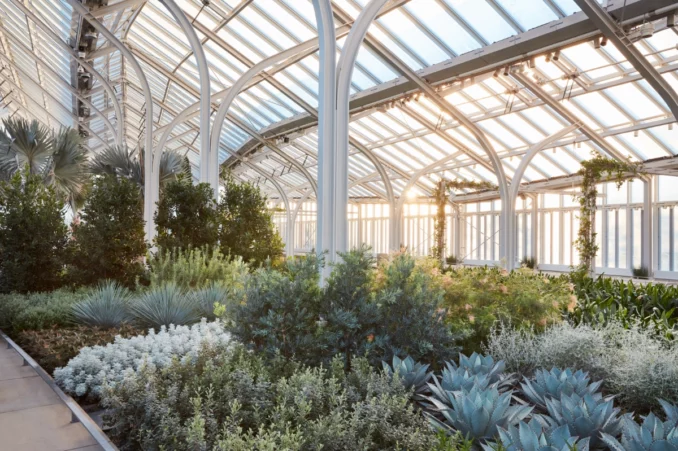
Rows of Cypress (Cupressus sempervirens) and Bay Laurel (Laurus nobilis) move through the drifts, framing spaces and gradually disclosing the garden. Trellis structures covered in espaliered citrus define each end of the garden. Vine structures cantilever over and shade the south walk. Canopy trees, including acacia (Acacia salicina) and palm (Bismarckia nobilis), take advantage of the conservatory’s height, providing shade for visitors below. Above the east and west entrances, more than 60 baskets of the trailing succulent Baby Burro’s Tail Sedum (Sedum burrito) hang like blue-green clouds, drawing visitors’ eyes to the soaring supports and arched roof of the conservatory. Throughout the year, a series of 90 seasonal plant species will be introduced throughout the permanent plant collection, expanding bloom and diversity within the garden.
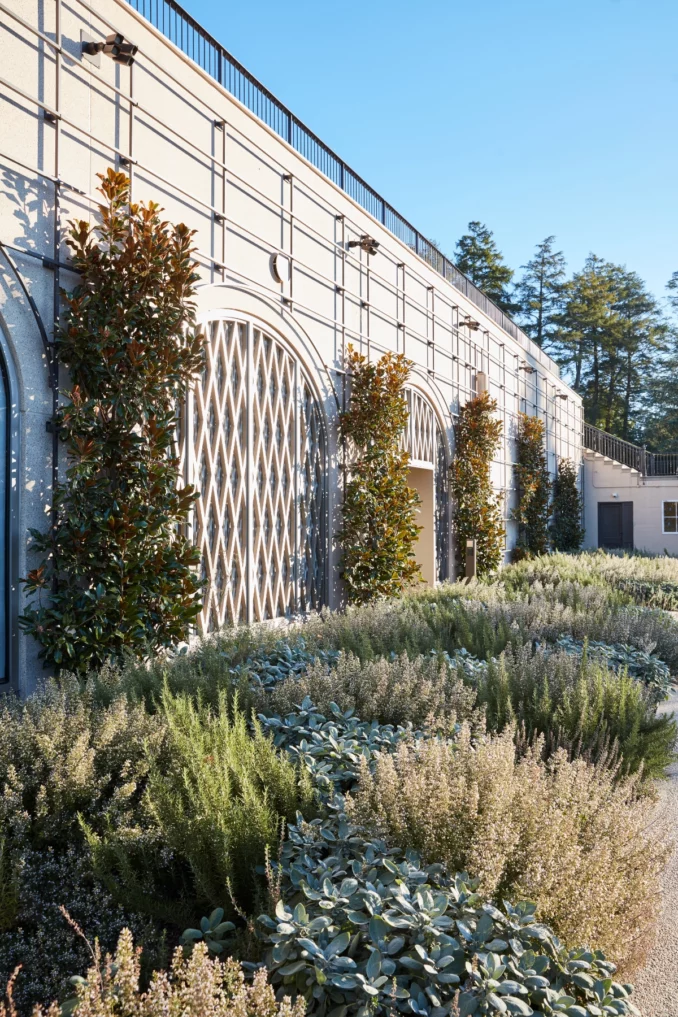
“Designing the landscapes for Longwood Reimagined has been a deeply rewarding experience. We approached this project with a commitment to creating immersive gardens that both celebrate the richness of Longwood’s existing collections and expand them for the next century. The high ridge of the property, home to Longwood’s conservatories, is now extended west to the iconic Brandywine Valley landscape. Visitors are drawn to the new West Conservatory and Bonsai Courtyard and the restored Cascade Garden along generously scaled promenades and shaded overlooks that highlight the changing seasons and Longwood’s origin as an arboretum. The pools, fountains, and planted islands of the West Conservatory’s Mediterranean Garden honor P.S. du Pont’s fascination with water in the landscape in an entirely new kind of garden within Longwood’s set of conservatories. With a focus on a permanent collection of plants, the garden celebrates the particular beauty of species that thrive in the Mediterranean’s dry climate, expanding understanding of one of our planet’s most diverse ecozones — its beauty, mutability, and resilience.”
Kristin Frederickson, Principal at Reed Hilderbrand
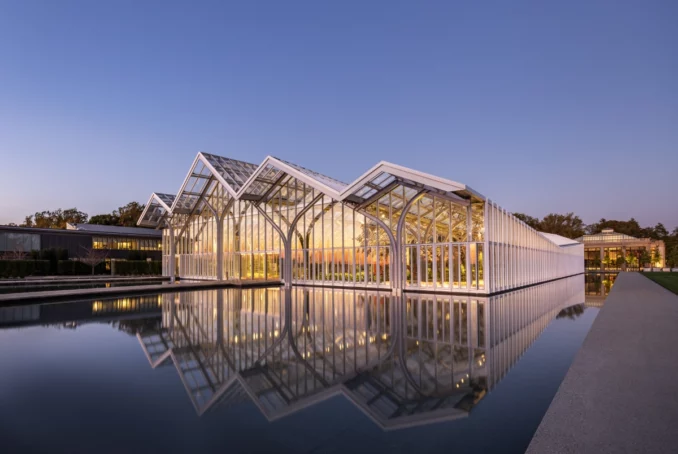
building (background), Main Conservatory (background); Image by Albert Vecerka/Esto.
Courtesy of WEISS/MANFREDI.
The 17 acres of Longwood Reimagined also enrich the relationships between the Conservatories, new and old, and the wider landscape beyond, elevating the visitor experience throughout. In the character of Longwood’s historic landscape, trees provide the armature for moving to and among these new destinations in a variety of ways.
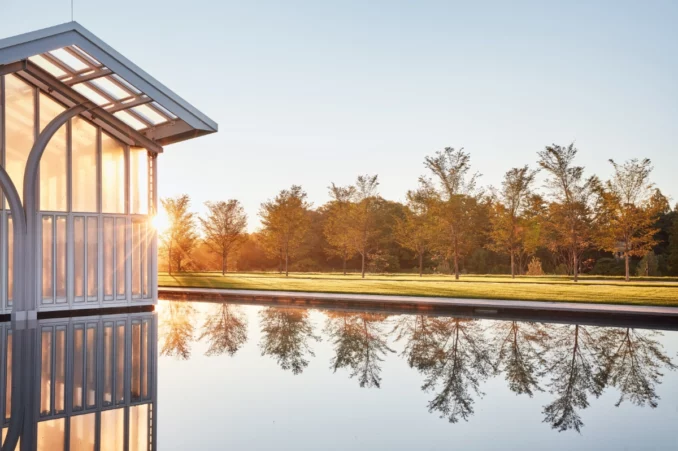
Longwood Reimagined
Architecture: WEISS/MANFREDI
Landscape Architecture: Reed Hilderbrand
Image Credits: As captioned.

